
Vicente Ordóñez joins Rice with CAREER Award
Rice computer scientist Vicente Ordóñez receives an NSF CAREER Award to advance machine-learning algorithms’ ability to recognize complex visual concepts.

Vicente Ordóñez joins Rice with CAREER Award
Rice computer scientist Vicente Ordóñez receives an NSF CAREER Award to advance machine-learning algorithms’ ability to recognize complex visual concepts.

Scientists seek details of cancer’s evolutionary tree
Rice University computer scientists will take full advantage of new technology to sequence the genome of a single cell to decode mysteries contained in tumors.

Rice, Rutgers developing inhalable COVID-19 vaccine spray
Scientists at Rice and Rutgers developing two COVID-19 vaccine strategies that do not require cold storage, one of which can be inhaled.
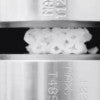
Soft shell makes hard ceramic less likely to shatter
Coating ceramic schwarzites, 3D-printed lattices, with a thin polymer helps keep them from shattering under pressure.

Flood relocation programs more disruptive to those who don’t live in white or affluent neighborhoods
HOUSTON – (June 29, 2021) – A government policy that removes homeowners from flood-prone areas disproportionately disrupts the lives of residents from less white and affluent neighborhoods, according to new research from sociologists at Rice University and Temple University.

Fungi embrace fundamental economic theory as they engage in trading
HOUSTON – (June 29, 2021) – When you think about trade and market relationships, you might think about brokers yelling at each other on the floor of a stock exchange on Wall Street. But it seems one of the basic functions of a free market is quietly practiced by fungi.

Reversal speeds creation of important molecule
A Rice lab’s reverse approach to making halichondrin B is the shortest route to a “rather complex and important molecule."
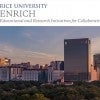
Six Rice-TMC research teams earn seed grants
Rice's Educational and Research Initiatives for Collaborative Health has announced six seed grants for research collaborations between faculty from Rice and the Texas Medical Center.
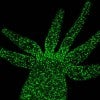
Keck backs Rice bid to ‘build a brain’
A $1 million Keck Foundation grant will support work by Jacob Robinson to understand neural pathways.
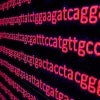
RAMBO speeds searches on huge DNA databases
Rice computer scientists are sending RAMBO to rescue genomic researchers who sometimes wait days or weeks for search results from enormous DNA databases.

Bioengineering department adds single-cell expert via CPRIT grant
The little things of life mean a great deal to Julea Vlassakis, who will bring her study of protein complexes and their role in cancer proliferation to Rice University this year.
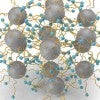
Quantum dots keep atoms spaced to boost catalysis
Rice engineers use graphene quantum dots to trap transition metals for high atom loading in single atom catalysis.

Nightside radio could help reveal exoplanet details
Rice scientists enhance models that could be used to detect magnetosphere activity on exoplanets. The Rice model adds data from nightside activity that could increase signals by at least an order of magnitude.

Study examines how breast implant surfaces affect immune response
Rice University bioengineers collaborated on a six-year study that systematically analyzed how the surface architecture of silicone breast implants influences adverse side effects.

Solar energy collectors grown from seeds
Rice University engineers have created microscopic seeds for growing remarkably uniform 2D perovskite crystals that are both stable and highly efficient at harvesting electricity from sunlight.